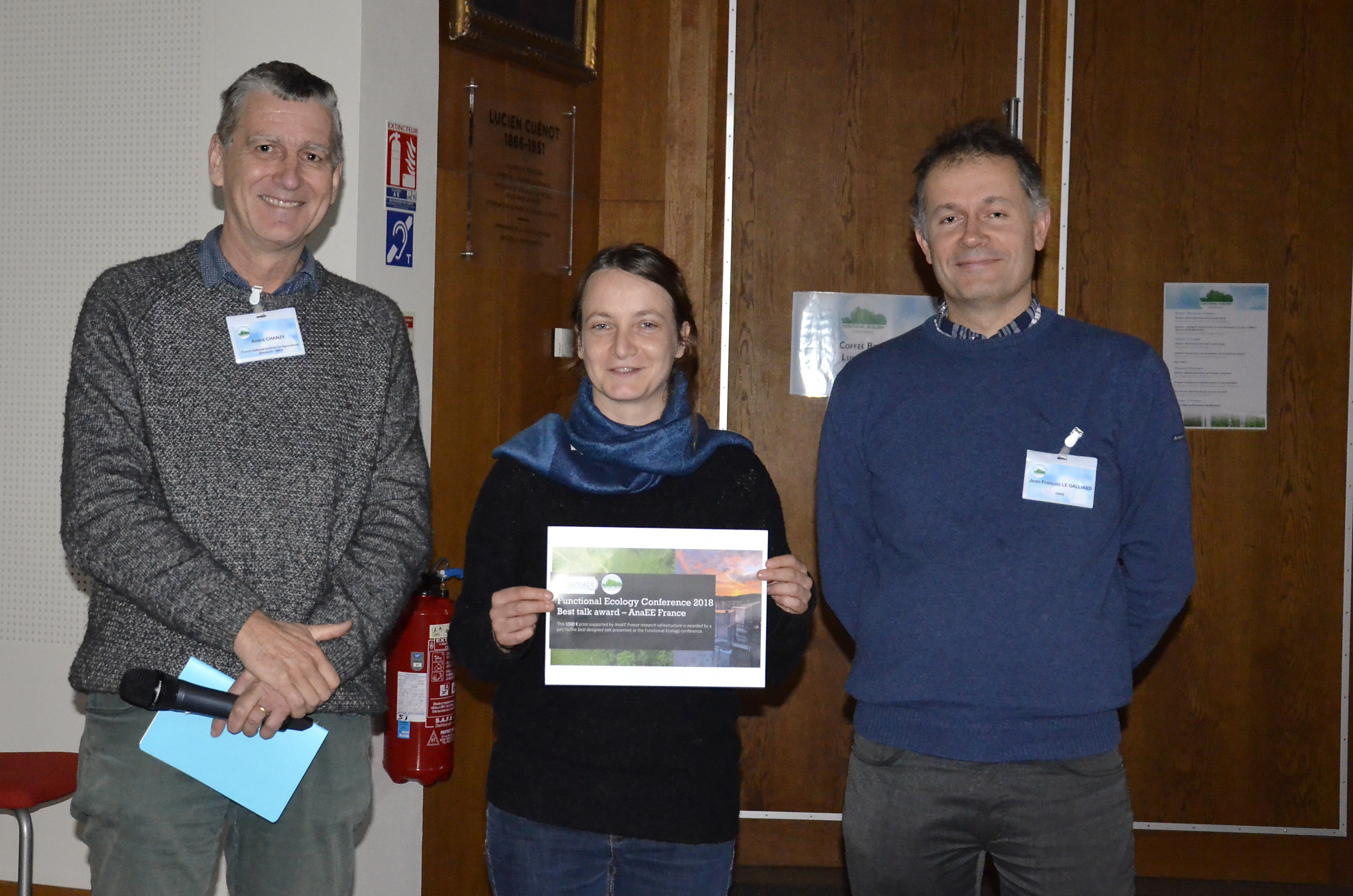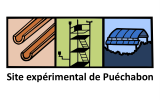Jordane Gavinet, postdoctorante au CEFE-CNRS, a remporté le prix de la meilleure présentation scientifique de la Fonctional Ecology Conference qui s’est tenue à Nancy du 10 au 12 décembre 2018. Son exposé présentait les résultats de 15 ans de suivi de la productivité primaire et de la transpiration de l’écosystème à chêne vert de Puéchabon en conditions de sécheresse accrue (expérience d’exclusion de pluie partielle) et en conditions éclaircies. Cette étude a été remarquée par la qualité du jeu de données présenté (15 ans et 4 traitements) et par son intérêt à la fois pour anticiper l’effet des changements climatiques sur le fonctionnement forestier et pour proposer des solutions de gestion forestière des taillis de chêne vert dans un contexte toujours plus limité en eau.

Résumé de l’étude ci-dessous :
Drought intensity and frequency is currently increasing in many regions due to reduced precipitation during the growing season combined with warmer temperatures. By reducing the water availability in mature forest ecosystems, rainfall manipulation experiments are necessary tools to study mid-term responses to drought and gain a better understanding of forest responses to gradual climate change. Stand density reduction by thinning has been recommended as an adaptive management to reduce tree competition for water, but its interactions with drought responses are still poorly known especially at the stand level.
The throughfall exclusion experiment of the Puéchabon experimental site (AnaEE-France) combines a rainfall exclusion (27% reduction of precipitation inputs) with a thinning treatment (30% reduction of the basal area) in a Quercus ilex Mediterranean forest. We investigate treatment effects on stand aboveground primary productivity (ANPP) and water fluxes over 15 years, and explore whether these treatments modify the inter-annual relationships between drought and ecosystem functions.
The reduced precipitation regime induced an 11% decrease in total stand ANPP, mainly due to a 23% reduction in leaf litterfall. This decrease in leaf production was accompanied by reduction of transpiration by approximately 23%, which is consistent with the predictions of eco-hydrological equilibrium theory. Stand reproduction was also severely affected by rainfall exclusion, while stem growth and tree mortality were not significantly reduced. Thinning mimics the ecosystem response to drought by reducing stand density, leaf area and transpiration, but it stimulates stand reproduction and stem growth so that ANPP was maintained in thinned stands, even under drier conditions. Rainfall exclusion and thinning treatment did not alter ANPP relationships with spring drought. The relationship between transpiration and drought exhibited, however, a lower intercept in droughted and thinned stands due to the structural constraints on tree transpiration exerted by a lower leaf and sapwood area. Our results suggests that i) mid-term changes in stand ANPP due to precipitation reductions can be inferred from the historical temporal relation between stand ANPP and drought and ii) thinning can compensate for reduced water availability and decrease stand sensitivity to drought.
The long-term observations made in the throughfall exclusion experiment of Puéchabon are particularly valuable as they are a first step toward understanding mid to long-term acclimation in natural forest ecosystems.





